Black Food Matters and Food Justice with Hanna Garth, MPH, PHD
- The racist connotations of the term “food desert” and why “food apartheid” is a preferable alternative
- How parents can challenge the rhetoric of nutrition and food that needs to look or be a certain way in order to be “normal” or “healthy”
- The “why” behind her book Black Food Matters: Racial Justice in the Wake of Food Justice and what it means for parents today
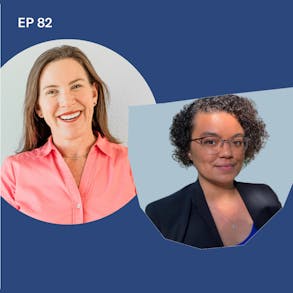
LISTEN TO THIS EPISODE
Episode Description
It’s no secret that food and nutrition is traditionally taught through a white-centric lens. In this episode I’m joined by Hanna Garth, a food anthropologist and professor and author of Black Food Matters: Racial Justice in the Wake of Food Justice to talk about the underlying problems of food inequality as they pertain to race and culture.
If you’ve ever wondered how a food swamp differs from a food desert, or what the term food apartheid actually means (...and why it’s preferred over food swamp and/or food dessert), this episode has some answers for you.
Hanna is helping parents learn to speak about food and culture to our kids in a way that challenges the rhetoric of nutrition and food that needs to look or be a certain way in order to be “normal” or “healthy”.
About the Guest
- Dr. Garth is a sociocultural and medical anthropologist specializing in the anthropology of food. Her work addresses issues of inequality and structural violence, with regional interests in Latin American, the Caribbean, and the United States. She currently has active research projects in Cuba and Los Angeles
- Dr. Garth is an assistant professor in the Department of Anthropology at the University of California, San Diego, completed BA with a triple major in Anthropology, Hispanic Studies, and Policy Studies at Rice University.
- An MPH in Global Health at Boston University, and a PhD in Anthropology at UCLA and held a University of California President's Postdoctoral Fellowship at the University of California, Irvine from 2015-2016.
Links from this Episode
- Follow Hanna Garth on Instagram @hgarth and Twitter @hannagarth
- Hanna’s website is at http://www.hannagarth.com/
- Her book, Black Food Matters: Racial Justice in the Wake of Food Justice book is here
- Hanna’s book, Food in Cuba: The Pursuit of a Decent Meal is here
- Baby-Led Weaning with Katie Ferraro program with the 100 First Foods™ Daily Meal Plan, join here: https://babyledweaning.co/program
- Baby-Led Weaning for Beginners free online workshop with 100 First Foods™ list to all attendees, register here: https://babyledweaning.co/baby-led-weaning-for-beginners

Latest Episodes
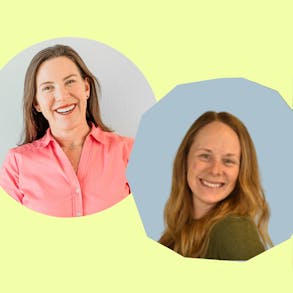
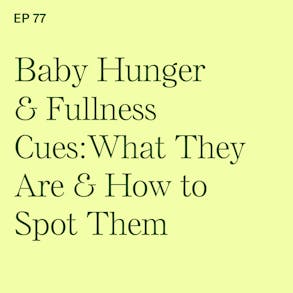
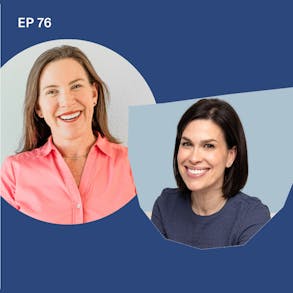

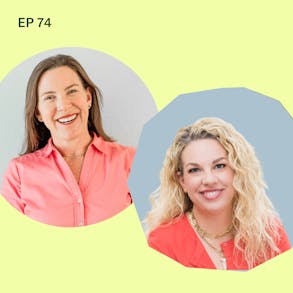
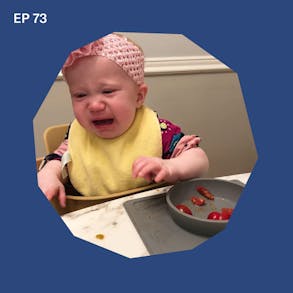
Hanna Garth (0s):
What underlies food apartheid is that places where there are low income markets do not want to cater to also tend to be black and Latino or other people of color. There is an underlying form of racism.
Katie Ferraro (15s):
Hey, there I'm Katie Ferraro, registered dietitian, college nutrition professor and mom of seven specializing in baby led weaning here on the Baby Led Weaning Made Easy podcast. I help you strip out all the noise and nonsense about feeding, feeding you with the competence and knowledge you need to give your baby a safe start to solid foods using baby led weaning. Hey guys, welcome back to another episode. And today I am joined by professor Hannah Garth. Dr. Garth is a socio-cultural and medical anthropologist specializing in the anthropology of food.
Katie Ferraro (56s):
So she teaches at the University of California at San Diego and her work addresses issues of inequality and structural violence. She has regional interests in Latin American, Caribbean, United States, food and cuisine. She literally took us on a trip around the globe in this interview, but she currently has active research projects in both Cuba and Los Angeles. And she's going to talk a little bit about some of the similarities and some of the differences in the food cultures. She's going to explain to us a little bit about the use of terminology things. We hear a lot like the term food desert. What does that actually really mean? Why is it a not preferable term? She's going to explain to us why in her line of work, she's using terms more like food apartheid and what that means, and then how we as parents, can structure our language and our interactions with our children in order to avoid some of the implicit racism and bias that we may not even be realizing we are perpetuating.
Katie Ferraro (1m 53s):
So with no further ado, I want to introduce you guys and bring on Hanna Garth to the podcast. She mentioned a lot of resources in this episode, and I want to let you know that in linking them all up at the show notes for this particular episode at blwpodcast.com/82. So here goes black food matters and food justice with Hannah Garth. Well, hi Hannah. Thank you so much for joining us today.
Hanna Garth (2m 20s):
Thanks. Thanks for having me.
Katie Ferraro (2m 21s):
All right. So to get started, I was curious if you could share with our audience a little bit about your background. So how did you come to be interested in the area of anthropology of food and I'm particularly interested what led to your work and your writing of the books, some of your books, Black Food Matters, Racial Justice in the Wake of Food Justice, and then also your other book Food in Cuba, the Pursuit of a Decent Meal, which came out in 2020. So like give us the backstory if you can.
Hanna Garth (2m 49s):
Okay. Well I guess I'll start in the beginning. I grew up in Wisconsin in a relatively small town and I grew up in town, but it's a pretty rural area. So it's by farms. And so I feel like growing up in that context, I was aware of food production in a sort of agrarian sense, but I always, I don't know if it's connected to growing up Wisconsin or not, but I've always been interested in food and cooking and gardening and those kinds of things as a personal interest. When I was in late high school, early college, I thought that I wanted to be a pharmacist.
Hanna Garth (3m 29s):
So when I went to college, I started out majoring in biochemistry. And then I realized that I actually really like interacting with people and thinking about the world in terms of social and cultural things. So I changed my major to anthropology and I ended up majoring in anthropology, policy studies and Hispanic studies. And in some of my early work in undergrad, I realized I was interested in connections between food and health. After I graduated from Rice, I got a master's in public health at Boston University that was focused in global health.
Hanna Garth (4m 13s):
And as part of that experience, I implemented a nutrition program in the Philippines. And from my experience, working in the Philippines and implementing a nutrition program, I realized that I was interested in some deeper engagement with the problems that cause uneven access in food. And I decided to go ahead and pursue a PhD in anthropology. I went to UCLA and for my doctoral research, I decided to do research on food access in Cuba. And part of the reason that I was interested in Cuba is that is one of the only places in the world that has a national food ration, where every single citizen and some immigrants get a food ration almost for free each month that provides them with the basic foods that they need to survive.
Katie Ferraro (5m 13s):
Their food is not being rationed. They get a ration?
Hanna Garth (5m 17s):
Well, it's both. So the way that the socialist food distribution system works is that the Cuban government centralizes all production and distribution. So they ensure that all of the food in the country is evenly distributed through a food ration. So everyone gets like this, a basic amount of food that they need to survive each month. And then there's also subsidized foods that they can buy off the ration and un-subsidized foods that they can buy off the ration. And those are also controlled by the socialist government, but it's just a way basically they're sort of tiered pricing system. So there's a way of ensuring that everyone gets basic amounts of free food, and that people are not able to sort of hoard the entire food supply.
Hanna Garth (6m 7s):
And then there's foods that are available and sort of at different price levels. And this system has basically resulted in very low levels of malnutrition and hunger in Cuba. And Cuba has been praised by the United nations for this system. However, when I spent time there and I actually talked to Cubans, they told me that the food system was really difficult for them and that they struggled to access food, that the foods that they were rationed didn't cover enough of the month and that they had to innovate ways to be able to access food by purchasing it either at subsidized markets, un-subsidized markets are on the black market.
Hanna Garth (6m 52s):
And so my first book is really about how households go about acquiring food in this system where certain items are scarce or certain items are so expensive that they're out of people's reach. And one of the things that I found was that this system is largely held together by the labor of women. So although the United nations is praising the Cuban government for the way that it is, has constructed its food distribution system. It is really a lot of labor that women are undertaking for their households to go from place to place spending hours and a lot of energy acquiring food.
Hanna Garth (7m 37s):
And another thing that's really important for Cubans is to be able to eat meals that they call a decent meal or a decent and dignified cuisine, which I write about in the book. And they're looking for meals that they understand to be culturally relevant and historically constituted. So like the meals that their grandmother would have made and the meals that they're proud to serve their children, and they hope that their children will continue to serve it to their children. So that kind of a thing is what people are after. So that book came out in January with Stanford University Press, and I am still conducting some other research in Cuba.
Hanna Garth (8m 23s):
But my second major project has been looking at food justice organizations in Los Angeles. I look at organizations that have the goal of increasing access to healthy food and health is in quotes for communities in south Los Angeles and east Los Angeles, which are predominantly black and Latino respectively. And I basically track how they've developed their mission and their ideas about what kinds of healthy foods need to be distributed and whether or not they have an understanding of racial and economic justice or the forms of racism and discrimination that have really undergirded the problems with the food system in these areas for that project.
Hanna Garth (9m 14s):
I have another single authored book that I'm working on right now that will come out in a couple of years, but that's the basis of the work for the edited volume that I published with Ashanti Reese this year, Black Food Matters, Racial Justice in the Wake of Food Justice.
Katie Ferraro (9m 32s):
Now, your work is so interesting. Because like in the intro, you've taken us from east coast to the west coast, to the Philippines, to Cuba, back to Los Angeles. And I was just curious if you've seen some common underlying themes in the different geographical regions where you've worked that pertain to the matters of food justice that you now work so diligently on.
Hanna Garth (9m 55s):
Yeah, that's a good question. And I think starting with, from when I was a child, one of the things that I noticed when I was a child was how much industrial agriculture was sort of taking over the small farms and family farms that I had grown accustomed to. So industrial agriculture is connected to the global industrial food system, which is really dominated by a dozen or slightly more, slightly less than a dozen multinational corporations.
Hanna Garth (10m 36s):
So all of these problems with food are really connected to the global industrial food system and the ways in which it basically is a series of corporations who are seeking to make profit and who are seeking for their shareholders to profit. And they're not necessarily thinking about the most egalitarian or even the most logical ways to distribute food across the globe. So that affects even socialist Cuba. And it certainly affects the way that people access food in a place like Los Angeles.
Katie Ferraro (11m 12s):
And could you elaborate a bit on the concepts of food apartheid versus a food desert? So how can families who live in food apartheid be supported in both food access and choice?
Hanna Garth (11m 27s):
Sure. So food apartheid is really a symptom of a couple of larger problems. One of the larger problems being the global industrial food system and the ways in which our food distribution system is tied to capitalism and profit making. So because the goal of a grocery store is to make a profit grocery stores argue that they should only establish new stores or routine current stores in parts of the city with higher per capita incomes. And they'll make a case that they should not have a store in areas with lower incomes because they cannot make a profit.
Hanna Garth (12m 12s):
And so that's one of the basic building blocks of food apartheid, where you start to see that more affluent parts of a city will have more markets they'll have nicer markets, they'll have larger markets, they'll have newer markets and then lower income areas of the city have fewer markets, older markets, smaller markets. And in the case of Los Angeles, just completely different markets, like the chains, the corporate chains that go into the areas of Los Angeles, where I work are not seen in a fluent areas of Los Angeles. And they're completely different, but owned by the same corporation. Not necessarily a lot of the markets in south Los Angeles are much smaller corporations.
Hanna Garth (12m 58s):
So they're small grocery chains. There will be some situations where you have like the same grocery corporation that has sort of like different tiers of stores and you'll see the lower tier in lower income areas. And then the more fancy tier in more affluent areas.
Katie Ferraro (13m 17s):
And I was curious, could you give examples of that? Like, would listeners recognize certain stores and not others, or do you just choose to stay brand agnostic?
Hanna Garth (13m 28s):
I don't usually give examples because grocery chains are so different all over the United States. So sometimes
Katie Ferraro (13m 34s):
Can I ask you my question then?
Hanna Garth (13m 36s):
Sure.
Katie Ferraro (13m 36s):
So, okay. When I was in, this is certainly not my area of expertise. I went to UC Berkeley for a master's in public health and I did a public health nutrition and international nutrition. But as it worked as a graduate student assistant on a food stamp nutrition education program, so fizzing up at the time and it was about, I mean, it was educating us about like calcium in a predominantly Vietnamese subsection of south and west Berkeley, an audience and a population I had known nothing about. And so I remember we had to give gift cards, you know, you couldn't give cash incentive to people to be in the program. And so I remember my, the head researcher saying, okay, go to this grocery store. And I went and I got a bunch of Food-4-Less gift cards.
Katie Ferraro (14m 16s):
And she said, no, no, no, no, no. This population does not shop at Food-4-Less. When we're working with the Hispanic population on this part of town and their clientele, then we get the Food-4-Less gift cards. And I was like, oh, I didn't know that different ethnic and racial groups shop at different parts of, and then we started looking at the corporate structure and it was Ralph's in Safeway. And then Food-4-Less was targeting. Definitely. If you walked down, the aisles are certainly many more Hispanic foods in those stores. And they were located in more predominantly Hispanic areas. And it was for me as like, I was a graduate student at this point, but very eye-opening like, oh my gosh, they made a grocery store, a subset of their main grocery store that is for Hispanic population.
Katie Ferraro (14m 57s):
And if I gave the Vietnamese subjects a gift card to Food-4-Less, they might use it, but there might not be foods that they would have otherwise selected. And it definitely, might've been more challenging for them to get there, et cetera. And so for me, whatever reason, whenever I see a Food-4-Less, I always just kind of conjures up like that image of are they targeting like a certain ethnic and racial subset of customer? Like do the big grocery stores do that?
Hanna Garth (15m 22s):
Well, yeah. I mean, the answer is it's more complicated than it seems. So it is both that stores are catering to a particular clientele and they, they are doing that intentionally. So in places like south LA, the common stores are El Super, Superior, Food-4-Less, Numero UNO Market, Ralphs, Vons and smaller local chains. But even when you go, if you go into a store that has different locations in parts of south LA, so you might have a Ralph that has a location in a black area versus a location in a Latino area, and they'll change their signage from store to store.
Hanna Garth (16m 5s):
So, you know, in produce in one section, you'll see "frutas y verduras" and you'll see fruits and vegetables in another store and the types of things that they carry. Like for instance, you're more likely to find a couple of different kinds of plantations or tarro and other kinds of tubers that are commonly consumed in Latino communities in those stores versus other stores will carry other items.
Katie Ferraro (16m 31s):
And it kills me, like I always think of, I live in San Diego and the Hispanic grocery stores is a great place to get Florida Calabasa, which is like completely affordable. But if you go to a fancy grocery store, like at a different neighborhood, it costs like five times the price and like, have it has a different name, but it's the same exact thing. It's kind of crazy.
Hanna Garth (16m 50s):
Yeah. That's actually one of the first ways that I sort of came into this project was that I was interested in making "tostones," which is a Cuban food that is a mashed plantain, but you need to have green plantains and the grocery stores in west LA where I lived near UCLA didn't have green plantains. They only had ripe ones. So I just kept driving and driving and driving until I found green plantains. And I ended up in south LA and it's like you said, like,
Katie Ferraro (17m 19s):
And do you had a car to get there? Which is a lot of people don't yeah.
Hanna Garth (17m 25s):
Yeah. I had a car, but I ended up seeing how, you know, the forms of apartheid are not just about different markets that are available, but it's also about different food availability. People use the term food desert all the time. And so I was curious if you could just let us know what exactly does that term entail?
Katie Ferraro (17m 48s):
So the term food desert is basically an area where people imagine that it's completely devoid of options for healthy food. So it's an area where people think that there are not full-service markets and where people are only able to access food at places like liquor stores and corner stores. But the term food desert is seen as, as an offensive and racist term. And it's also related to the term food swamp, which is also offensive and seen as an area that is just inundated with unhealthy food, like a lot of fast food for instance, but these terms are problematic because they don't get at the underlying structure, the underlying problem that's going on here, which is why people have turned to the term food apartheid, which I think was actually originally coined by Karen Washington, which is also a reference to a apartheid in South Africa.
Hanna Garth (18m 53s):
So understanding racial apartheid, understanding the separate and unequal systems that we have across the globe, really for having a different kind of food system in wealthy white areas and having a totally different food system in lower income and communities of color.
Katie Ferraro (19m 10s):
So Hannah nutrition is primarily taught through a white centric lens. And I'm curious to know your opinion and your experience on how this is affected food, culture and family meals in the Latin and black communities?
Hanna Garth (19m 24s):
Thanks for that question. It's good to have a nutritionist that understands that nutrition is primarily understood through a white lens. I think first it's important to say a couple of things about race, which is that, you know, scholars understand race as a process rather than a thing. It's a social process that's based on ideologies and practices. And in general, the things that people think of as mainstream or normal in the us are white and are centered around sort of white culture where white people and what they do is positioned as normal and as different from what other people do other with a capital "O"
Hanna Garth (20m 14s):
and those others tend to be racialized. So they tend to be black indigenous people of color Latinos. And what's also important here is that there is a dimension of power and knowledge going on. So in the sort of white quote unquote normalized position, there is an idea that that is best and that is correct, and that holds power. And so when we don't see this through a lens of race and whiteness, we can just think that, you know, what the dominant paradigm is, is simply normal and other paradigms are not.
Hanna Garth (20m 55s):
But in fact, what's happening is that these are just sort of predominant practices of white people. So one of the things that I think we need to do when we think about this question is to really take a step back, understand, you know, your own social position in the problem and in the United States and as a person and slow down and learn about the history of how, you know, certain forms of eating became understood as healthy and how other forms of eating became understood as unhealthy. You know, some of the ways you can do that are by reading the work of scholars that have really thought this through some people like Julie Guthman and Rachel Slocum have written about whiteness and connection to food, but on a more sort of basic level, what ends up happening is that people get really stuck, caught up on nutritional guidelines, so that food pyramid, you know, you get it in school, you get it.
Hanna Garth (22m 5s):
When you go to the doctor and people have come to believe that the food pyramid is the sort of end all be all of what good and healthy eating is. And that people who eat for instance, what we call the inverted pyramid are automatically eating in a sort of unhealthy and quote unquote bad way. And really the problem is sort of placing way too much emphasis in these nutritional guidelines and not sort of being able to be critical of them. Being able to understand that nutrition is an evolving science. It's something that has changed in our lifetimes, and it will continue to change.
Hanna Garth (22m 50s):
As people understand both the complexities on a scientific level and the multicultural dimensions of nutrition, but many people as they sort of push these nutritional guidelines end up reproducing whiteness reproducing the idea that white cultural norms are the norm rather than spending time understanding the roots of racism and discrimination and redlining and apartheid that have really created the problems of food inequality in the first place.
Katie Ferraro (23m 20s):
And I think the perfect example of that is you mentioned going to the doctor where if they take your height and your weight, they plot your BMI or body mass index, which is based on insurance, actuarial tables of middle-aged white men in the 1960s, which for the most part is not representative of the good majority of that patient population. And yet we're using those standards and saying, I mean, they literally call the quote unquote healthy BMI range. They call it normal with the implication being that anything outside of that is abnormal and that's we're teaching nutrition students. That's what we teach medical students is that BMI matters. And there are so many other factors, of course, that affect health. And yet being a college nutrition educator for the last 20 years guarantee you, everyone that comes out can calculate a freaking BMI.
Katie Ferraro (24m 5s):
And, but not understand these constructs that you're talking about that really drive a lot of health issues and disparities in our culture.
Hanna Garth (24m 14s):
Yes, definitely.
Katie Ferraro (24m 14s):
You are a parent parents listening are parents. I'm curious if given the work that you do to have any tips for parents about how they can talk about food and their culture to their kids, and to challenge this rhetoric of nutrition and food needing to look or be a certain way in order to be normal or healthy, like what can we do to not replicate these problems in future generations?
Hanna Garth (24m 35s):
Yeah, I think that's a really good question. And, you know, I don't have all the answers here, but I think one thing to think about is appreciation of other cultures, not appropriation. So actually two of the chapters in the black lives matter volume get at this, the one by Judith Williams and the one by Billy Hall where there's a really a fine line between appreciating other cultures and either appropriating them or othering them so much that it just becomes a way to sort of distinguish different foods from the kinds of foods that you eat at home.
Hanna Garth (25m 21s):
So starting with language, right? And the way that you talk about food, not describing nonwhite foods as ethnic food is probably the first step, not, you know, thinking that everything is going to be too spicy or too fatty or too sweet or too fried or too anything for your children and for yourself. But just thinking about how all of those terms have a negative connotation. And they're based on the assumption that what you eat or what you're used to eating is normal or better. So that appreciation and sort of venturing beyond the basics is part of like slowly introducing kids to a broader palette.
Hanna Garth (26m 10s):
But what I often see is that it's another form of exoticization and it becomes another way of like, sort of becoming a cooler parent than other people, because your kids will eat, you know, XYZ food. So trying to get away from that and just appreciating other kinds of foods from what your family normally eats.
Katie Ferraro (26m 28s):
Can I ask you in your own family, do you try to avoid certain terminology? Like I know personally, I mean, I'm trained as a registered dietitian, but I have seven small children and I really try not to use the word healthy because then they all, they wanna know what the opposite is and it's not healthy. So like in nutrition and as a whole, we really try to stay away from the term healthy. Are there words that you don't use that maybe we could learn from to help us avoid some of these, you know, inadvertently many times it's inadvertent classifications of different categories of foods that we don't even realize we're doing? Like, what do we not say?
Hanna Garth (27m 4s):
Yeah, I think, well, one of the things that I do with my kids is to encourage them, to eat all kinds of foods and to explain to those. So I'm, I think a lot about macronutrients. So I explained to my kids like what the macro nutrient content of what they're eating is without trying to put like a, a moral valence on it. Yeah.
Katie Ferraro (27m 26s):
Like protein is good and this kind of fat is bad. You're just teaching about protein and fat.
Hanna Garth (27m 30s):
Yeah, right. So I don't say protein is good and fat is bad. I would just say like, oh, okay, you're going to have some cheese. That's got protein and fat in it.
Katie Ferraro (27m 37s):
Okay. Or you don't, you wouldn't say, you know, good carbs and bad carbs, which parents will do. Like they'll white carb foods. We're trying to eat more whole grains because they're better for you. You wouldn't differentiate between carbs.
Hanna Garth (27m 49s):
No, I, I mean, I encourage my kids to eat all kinds of things, including what other people might label as bad carbs. Like my kids eat white bread sometimes, and they eat whole grain bread sometimes. But I just try to sort of empower them with basic nutritional knowledge so that they can sort of understand what the foods they're eating are made out of. And then, you know, hopefully with that knowledge, be able to guide their eating choices based on whatever it is that they guide them on in the future. But I do do things that I do encourage them to eat like more vegetables. So that's a basic thing that I do.
Hanna Garth (28m 30s):
That's maybe, you know, stereotypical parent thing of like, you should eat some green stuff.
Katie Ferraro (28m 36s):
It makes me feel good to know that you do that too, because we all do things inadvertently that might not be the most helpful. I love hearing the real side of it too, because it can be intimidating to parents to hear things like this. Oh my gosh, I should say this. And I shouldn't say that. And if I say this, I'm going to give my kids an eating disorder. I give them food anxiety or texture version. Like, and the point of this conversation, you guys is not to give you one more thing to be anxious about, but just to open our eyes to some of these issues surrounding food justice that we might not be aware of. So this has been immensely helpful. Hannah, thank you so much for your insight and for our audience. Where can we all go to learn more about your work?
Hanna Garth (29m 12s):
Well, thank you so much for having me. This has been really great to learn more about my work. I post a lot on Twitter. My Twitter handle is Hannah Garth, one word, and my work is posted up on my website, www.HannaGarth.com.
Katie Ferraro (29m 29s):
Okay. And that's Hanna. No "H" and I'm going to link to all of Hanna's resources, including I, if I may, I'd like to follow up and get a little bit more detail on some of the authors that you mentioned, you said, you know, just to be familiar with some of these different people's writings and work to educate ourselves and open our eyes, and that'll be all linked up on the show notes for this episode at blwpodcast.com/82. Well, thank you so much. And I really appreciate your time here on the interview.
Hanna Garth (29m 57s):
Yeah. Thank you. This was fun.
Katie Ferraro (29m 59s):
I hope you guys enjoyed that episode with Dr. Hanna Garth. Again, she specializes in the anthropology of food. She teaches at UC San Diego. She's written a number of really interesting books, and I know she mentioned some of them, but Black Food Matters Racial Justice in the Wake of Food Justice. And she also wrote another book that she mentioned Food in Cuba, the Pursuit of a Decent Meal. She's working on a few other books. She mentioned a couple of writers. Her Twitter feed is fabulously informative. So I'm going to link to everything that she mentioned in the podcast episode today on the show notes for this particular episode, which is blwpodcasts.com/82. Bye now.

The Program Baby-Led Weaning with Katie Ferraro
A step-by-step digital program for starting solid foods safely and navigating the original 100 FIRST FOODS™ meal plan with baby-led weaning.
 EXPERT-LED, PROVEN APPROACH TO EATING REAL FOOD
EXPERT-LED, PROVEN APPROACH TO EATING REAL FOOD CONCISE VIDEO TRAININGS TO MASTER BABY-LED WEANING
CONCISE VIDEO TRAININGS TO MASTER BABY-LED WEANING 100 FIRST FOODS DAILY MEAL PLAN WITH FOOD PREP VIDEOS
100 FIRST FOODS DAILY MEAL PLAN WITH FOOD PREP VIDEOS
Baby-Led Weaning for Beginners Free Workshop
Is your baby ready to start solid foods, but you’re not sure where to start? Get ready to give your baby a solid foundation to a lifetime of loving real food…even if you’re feeling overwhelmed or confused about this next stage of infant feeding.
Get baby-led weaning recipes and tips delivered to your email inbox.

